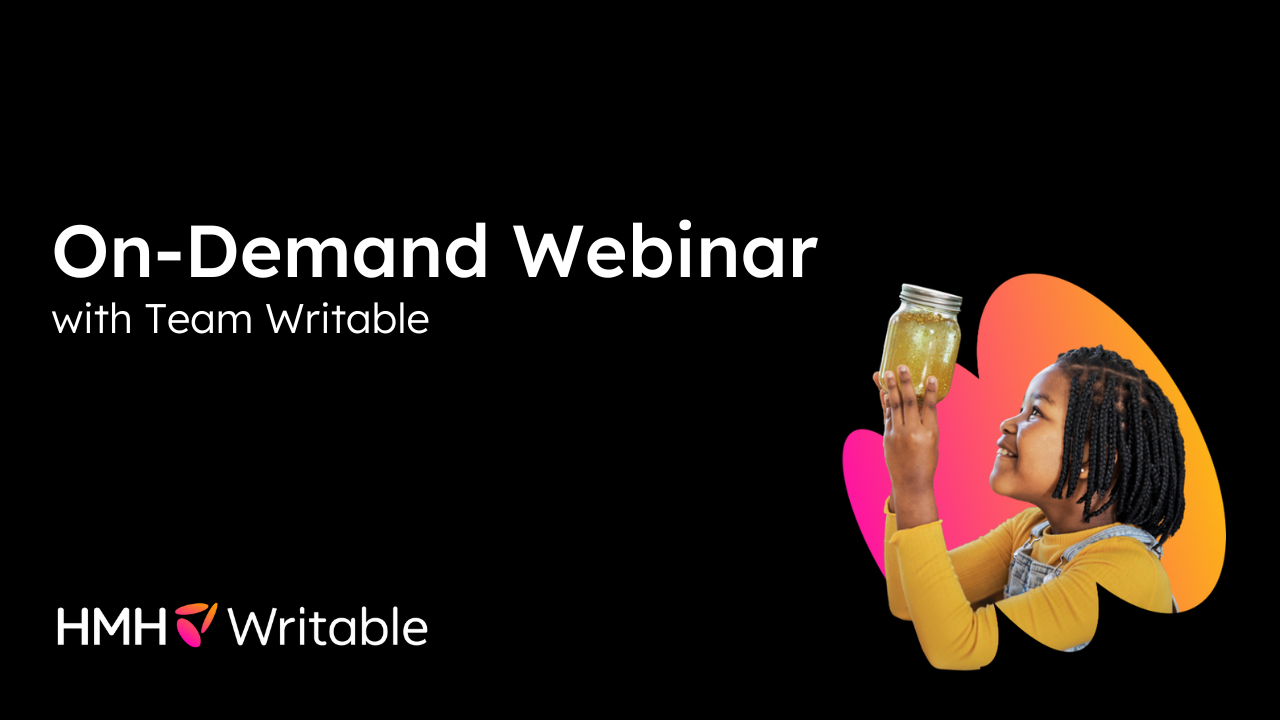Virtual teaching and learning is new, daunting, and rightfully feels overwhelming for most teachers. Luckily there are brilliant educators who are also experts in teaching virtually, even before Covid, and they are ready and willing to provide guidance and support so we can learn from them. Kim Pike is one of those experts. Recently we reached out to her and she’s provided us all with her top 10 tops for teachers as they become experts themselves in virtual and hybrid learning.
Kim is the Virtual Resource Coordinator for Gorman Learning Charter Network. GLC offers students a flexible and personalized education to empower them for success. From the beginning, Writable was designed as a program for virtual, hybrid, and in-person learning. This is why GLC chose Writable to support both their teachers and students in providing the best virtual learning possible.
Top 10 Tips for Virtual Teaching and Learning
1. Build and Maintain Relationships
Posing a thoughtful question at the beginning of a video meeting, such as “what is one thing you have learned, not school-related since school has been closed?” or snapping a shelfie (a current book they are reading) to share on a discussion board, are great ways to get students talking and engaged. In a virtual learning environment, creativity in building and maintaining relationships is key. Relationships have always been at the heart of teaching. Even in the current situation, providing time, space, and options for students to connect with their peers and teachers is needed!
2. Actively Engage Students
Similarly to a traditional classroom, online learning should include small-group work, partner work, peer feedback, and conferring. These instructional methods and feedback types provide an opportunity for engagement and active learning. For instance, during whole-group learning, try engaging students by calling on individuals to share what they have learned during a class meeting, or try creating small groups to where students can share their writing and insights with each other.
3. Provide Clear & Consistent Communication
Typically, there are two camps of extremes when it comes to communication: lack of communication and over-communication. When moving online, it is important to have one spot for students or families/caregivers to access communications, class information, updates, materials, homework calendars, and more. An LMS (learning management system) like Google Classroom or a district’s website are great examples. Consider having an approximate time each day that students can expect assignments to be posted or when they should check their school email for updates. Over-communication becomes a problem when multiple emails are sent from a teacher the same day, in addition to new assignments posted to an LMS (which also triggers email), a district newsletter with updates is sent, and a live video posted to watch. Streamline your communication to be clear, consistent, and timely.
4. Set Realistic Expectations
Setting expectations isn’t easy, but it’s important to make them realistic for both students and yourself. Shifting gears from a traditional in person classroom to one that is partially or entirely online is a daunting task. A typical school day from 8 am to 3 pm is not viable or sustainable in an online environment. Both equity and access must be considered and planned for. Prioritize learning opportunities to maximize student choice and voice. If possible, replace grades with feedback and be flexible with due dates. Homelife, new responsibilities, and stress because of the new learning environment may make learning new content difficult.
5. Stay in Regular Contact With Students
When a student misses a live, synchronous class, has missed turning in assignments, or has not logged on to the LMS, it’s important to reach out to them. Approach with empathy and come from a place of concern. Let them know you miss them and are here to help. It’s much easier to forget or miss online classes than when you attend in person. Stress and trauma can also contribute to student absence. Reach out using multiple modes if necessary. Contact with each student should be made at least weekly, if not daily.
6. Know That Tech Difficulties WILL Happen
Just as in the physical classroom, technical difficulties will always arise. It’s normal and it’s okay! Having a multiple tech options, resources, or extra time built into your lesson can be helpful in order to handle these unforeseen mishaps. Collective trouble-shooting with students or colleagues to overcome challenges will help to build community and develop problem-solving skills. Stay calm, relax, and recognize these challenges actually support a culture of a growth.
7. Be Extra Flexible
It is important to be prepared, to have your slideshows and lesson plans ready, but it’s also important to be extra flexible. Recognize when it is not working with your students and you need to switch it up. Sometimes students aren’t ready or able to learn in the moment, and that should be respected. Engaged learning is the collective end goal, not necessarily getting through all of the prepared slides or the day’s complete lesson.
8. Meet Weekly With Colleagues
It’s not only important to maintain relationships with your students but with your colleagues as well. Plan weekly or regularly scheduled meetings to have everyone share new resources, tips, and workarounds that they have recently learned, or ideas they have used to successfully engage students. Try creating a space for casual sharing and connecting. Leaning on each other during this transition will help everyone move forward with their teaching.
9. Set Boundaries
It is easy to forget about your personal health and well-being while helping students during this virtual learning, but please, make taking care of yourself a priority. Communicate how and when students and caregivers can contact you for additional assistance. Be available for questions or conversations, but do not feel like it is necessary to be ever be available 24/7.
10. Implement Self-Care Routines
Educators are in the people business. We dedicate our time, our resources, and our hearts for the benefit and growth of kids. While it is true you are still an educator during this time, the added commitments and stressors while working from home can drain you both emotionally and physically. Implement self-care routines in order to be the best version of yourself for your students, your own family, and you!

Join Writable Virtual Educator Communities
Writable educators are all about supporting one another. Here’s how you can participate:
- Explore Resources in the Virtual & Hybrid Learning Center
- Learn in Writable Academy
- Attend Upcoming Virtual Events
- Catch Up on Past Writable Events
- Join Writable Educators on Facebook
- Join the Twitter Chat with #WritingMatters
- Listen to Writable’s Podcast: Writing Matters with Dr. Troy Hicks
We look forward to learning together!
![]()
Are you new to Writable or curious to learn more? Create a free teacher account, check out our pricing, schedule a personalized demo, or Join the Writable Educators Facebook Community.



